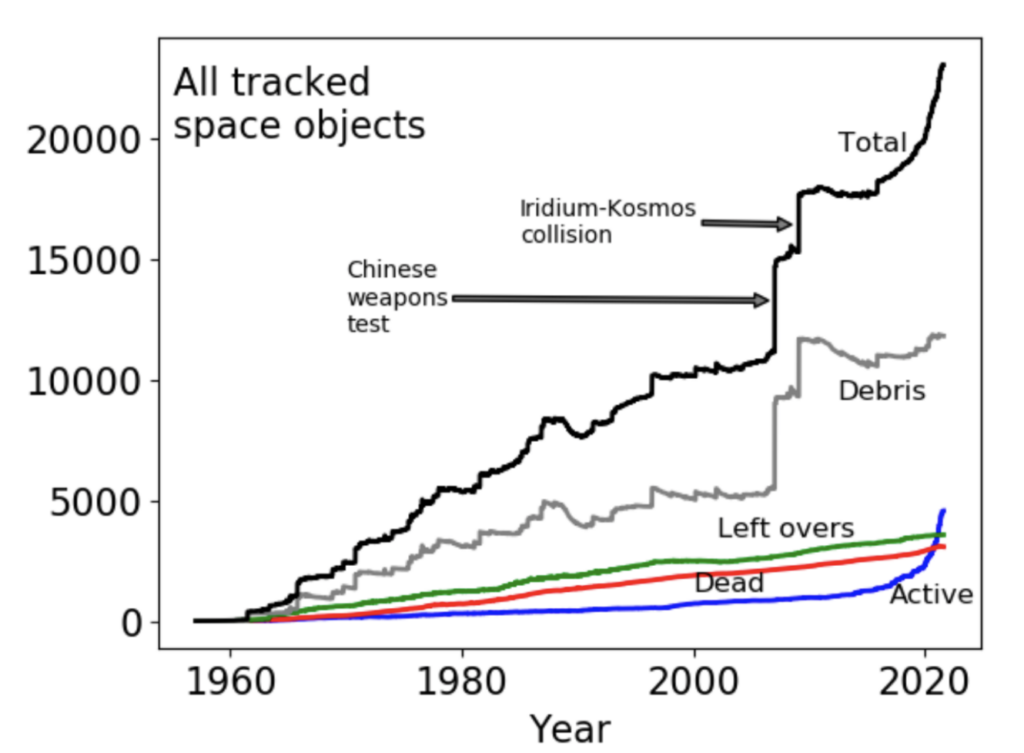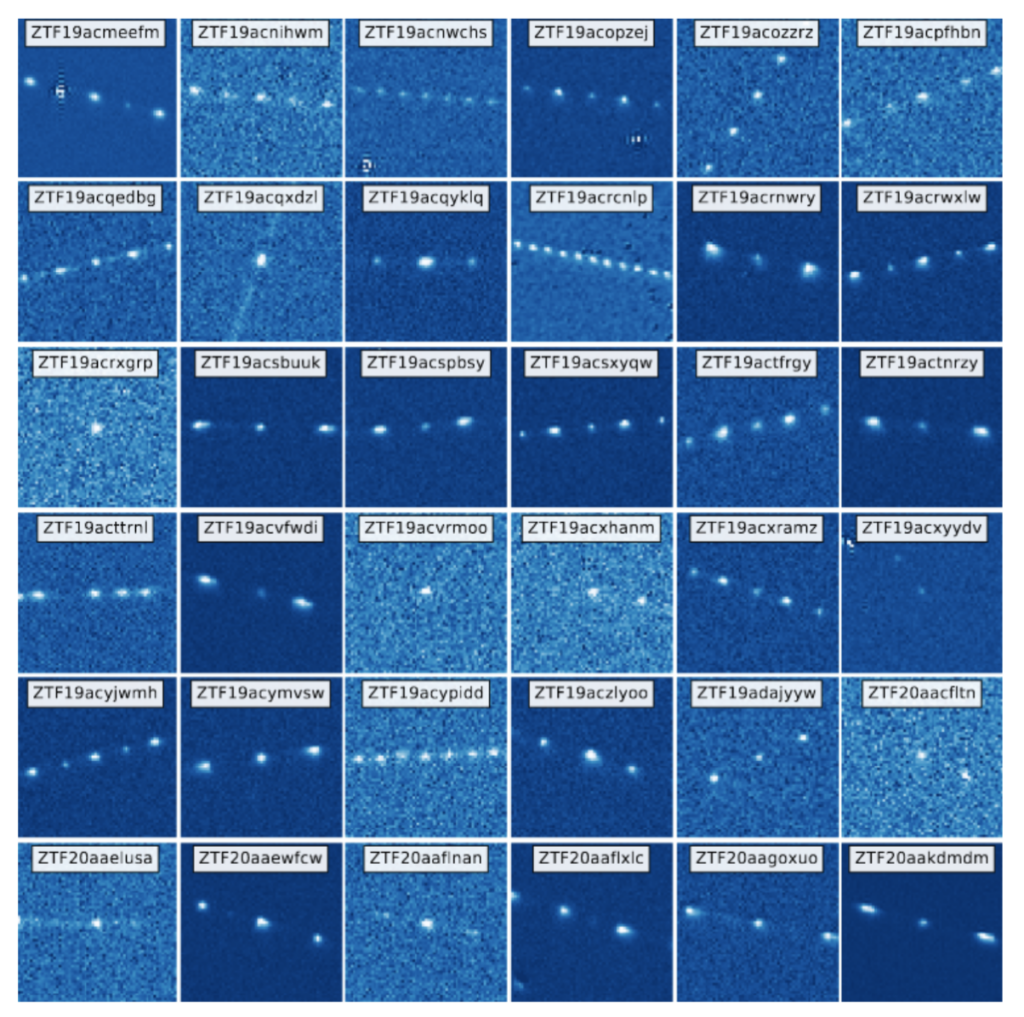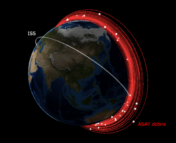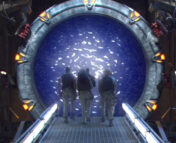A call to action against space debris.
Disclaimer: “Beyond astro-ph” articles are not necessarily intended to be representative of the views of the entire Astrobites collaboration, nor do they represent the views of the AAS or all astronomers. While AAS supports Astrobites, Astrobites is editorially independent and content that appears on Astrobites is not reviewed or approved by the AAS.
Just like soda pull tabs disappoint metal detectorists searching for rare coins, sparkling space debris litters a sky of astronomical transients. Over 4,000 functioning satellites currently orbit the Earth. Half of them were launched within the last two years.

Astonishingly, the satellite population stands to increase more than a hundred-fold. Over 400,000 new satellites are in various stages of planning throughout the lifetime of the LSST survey at The Vera Rubin Telescope, posing a threat to both ground- and space-based astronomy.
How drastic is this increase? The United States Federal Communications Commission (FCC) has foregone “exponential” to describe this trend, opting instead to call it a “step change” (Figure 1).
The Space Race Between Industry and Science
The hard news is “we” – governments, scientists, and laypeople – do not have a handle on the situation. The current volume of satellite debris is largely uncharacterized, uncatalogued, and already poses a significant threat to ground- and space-based astronomy.
Tumbling, dark, and difficult to track, unwanted shrapnel cause successive satellite glints, or short, bright flashes like in Figure 2. These unexpected, radiant glimmers shine anywhere between 4 to 14th magnitude for 0.1–0.001 seconds, mimicking highly energetic, ephemeral astronomical transients any astronomer would mistake for front-page science (Figure 3).

Lacking tools for identification, astronomers can mistake satellite glints for exotic phenomena, such as a gamma-ray burst from a redshift z~11 galaxy. Satellite glints stand to greatly inhibit the efficiency of LSST science, as a precursory study performed with similar data from the Zwicky Transient Facility (ZTF) found glints comprised over 3.6% of total events in a two-year period.
There is considerable pressure from industry to sort out this issue before it becomes even more unmanageable. The excitement of a “space-based” economy is growing as mass production of satellites are in the works. Those 400,000 satellites I mentioned are being produced as we speak! There are even investments from Lockheed Martin in satellite fuel stations that stand to change the function of our low-Earth ecosystem permanently, and private companies with satellites to create on-demand shooting stars. Space-based industry is quickly proliferating, and mission lifetimes can last several years to decades, making negotiation impossible once products are in orbit.
The Science of Satellite Tracklets and Glints
Not much is known about the magnitude, color, or duration of glinting debris because they are rapidly rotating and of indeterminate size. These qualities are difficult to ascertain because the pieces themselves are the result of a collision, rather than a planned, predictable orbit. After all, they are the result of an accident or total destruction!
A study by Karpov et al. 2022 found roughly 140 individual ZTF alerts per night of new and exciting science were generated by glinting pollution, amassing 73,000 individual events between 2019–2021. These glints are currently impossible to anticipate, as it is still unknown exactly how bright satellites are in their “quiescent” phases when they are not experiencing a flare.
Blake et al. 2021 have laid groundwork to address the quiescence question, and found debris tends to sit 5 mag fainter than their flashes. However, this means the full range of satellite brightnesses will be detectable by Rubin. The conclusions are stark: the fainter debris population will be “a significant contributor to the budget of rapid optical transients in the Vera C. Rubin LSST”.

If You Are Looking For a Research Project, This Is Your Sign
Satellite glints are a new problem and are therefore under-characterized. There is a strong reason to take action now: the increased sensitivity and cadence of new surveys, such as LSST, are meant to open a window in depth and time into the universe. However, Rubin is so powerful it will see satellites that are not flashing.
While satellite “mega-constellations” streak across science images, smaller fragments of debris cause these “glints”. Associating a streak with its underlying satellite is relatively straightforward thanks to the swath of detailed positional information available in online catalogs (such as the widely-used, open-access SATFLARE and CelesTrak). Conversely, tracklets are instantaneous flashes that can be isolated events or short-lived periodicity (Figure 2). Both professional and amateur astronomers can contribute to an existing project, TRAILBLAZER, to address satellite streaks, but it does not yet have a solution for glints.
Therefore, it can be difficult to link multiple glints to the same underlying object. But, it is well worth the struggle: one study found that over a two-year period false alarms shrunk from 140 to 12 per night as a result of linking individual flashes to their underlying piece of debris.
Because satellite glints are a new and difficult issue to tackle, the community so far lacks a detailed, dedicated study commensurate to the scale of the threat. As (known) satellite fragments far outnumber the quantity of satellites, the need to catalog fragments is great; and the gap in our knowledge will only continue to widen as our low-Earth orbit becomes more crowded in the coming years (Figure 1).
You are what makes the future bright
Astronomers have long anticipated Rubin for its pivotal role in astronomical history; it will uncover a multiplicity of transients, as well as new types of transients altogether (Figure 3).
The issue of satellite debris is a global issue, with far-reaching implications for diverse parties, such as those affected by light pollution, astronaut safety, and the feasibility of continued space- and ground-based observation.
Those who take up the gauntlet to monitor satellite debris will bring novel, publicly-available statistics to efficiently negotiate the interests of policy, industry, and science. The emerging field of space environmentalism strengthens the voice of the scientific community in this conversation.
The entire astrophysical community has much reason to pay attention, especially if you are:
- Astronomers receiving LSST survey data, or trigger multiwavelength follow-up on bright and fast transients.
- Astronomers and military who find and assess the risk of Earth-threatening asteroids
- A member of the astronomical community at large (e.g. safety of human space travel, future satellite launches, observational strategies, etc.) who use catalogs and statistics to avoid space shrapnel or tainted science images by strategizing timing with low-Earth satellites.
- Members of the public who have a say in the demand for satellite-provided internet and communication, playing a role in isolating our planet from the rest of the cosmos.
New satellites are being launched by private communications companies without enough pressure to consider alternatives. Currently, no legislation exists to protect the night sky from private companies.
While the UN is adopting a best-practices document, it is a slow moving process. You, reader, have a say in decisive action and protective measures for the night sky, especially in the wake of hundreds of thousands of new satellite constellations planned.
We can all look forward to LSST in the spotlight as one of the foremost drivers of change and discovery in the field. Equally important, the reaction to human-made satellite debris must scale with the potential for extraordinary discovery.
Astrobite edited by Ali Crisp, Pratik Gandhi, and Megan Masterson
Featured image credit: Wikipedia





Informasi ini bagus